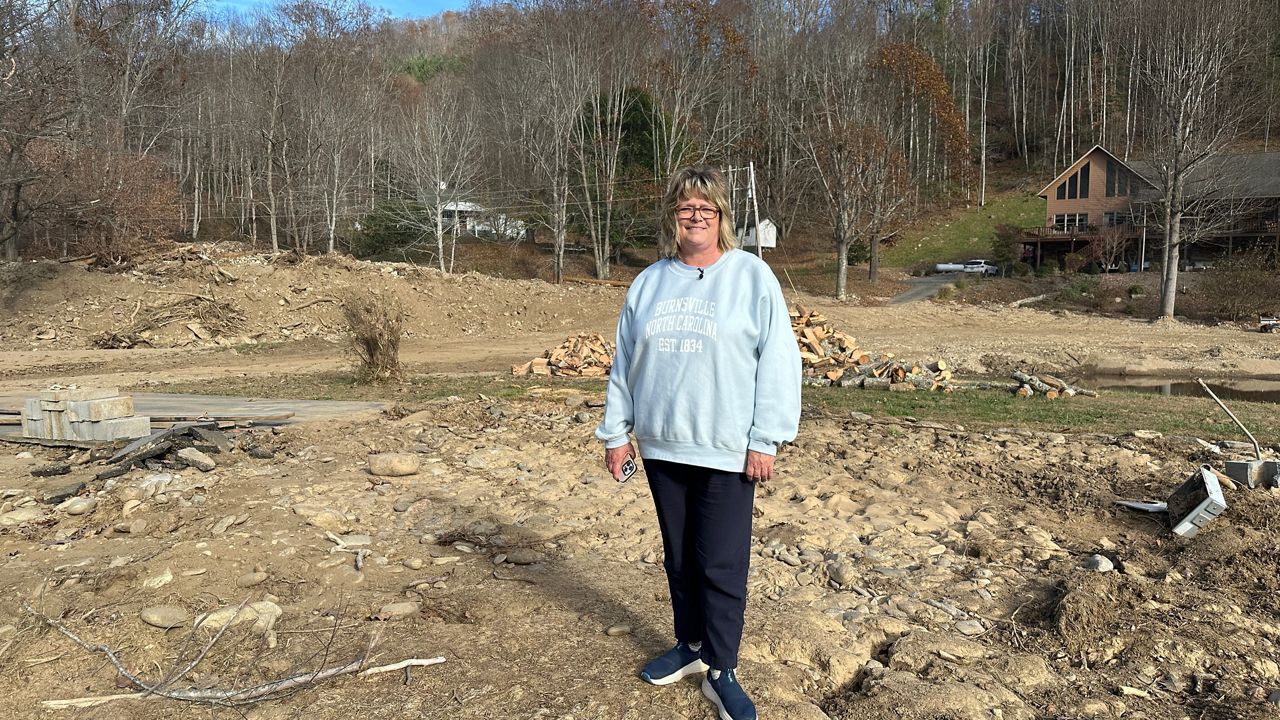Science
Infant mortality in the U.S. worsened after Supreme Court limited abortion access

Infant deaths have increased in the United States since the Supreme Court ruling that overturned Roe vs. Wade and allowed states to make abortion illegal, researchers reported Monday.
The change became detectable three months after the June 2022 ruling with an elevated rate of infant mortality involving babies born with serious congenital anomalies, the researchers found.
By the end of 2023, there were six months when the death rate for infants with severe anatomical problems was significantly higher than in the years leading up to the high court’s decision. The researchers also identified three months when the nation’s overall infant mortality rate had increased.
However, neither of those rates fell below their historical range in the year and a half after the ruling in Dobbs vs. Jackson Women’s Health Organization.
The findings, reported Monday in the journal JAMA Pediatrics, were seen as a clear sign that the Dobbs decision has prevented some women from terminating pregnancies that otherwise would have ended in abortion.
“There’s a really straightforward mechanism here,” said Alison Gemmill, a demographer and perinatal epidemiologist at Johns Hopkins Bloomberg School of Public Health, who wasn’t involved in the study.
“Prior to these abortion bans, people had the option to terminate if the fetus was found to have a severe congenital anomaly — we’re talking about organs being outside of the body and other things that are very severe and not compatible with life,” Gemmill said. However, if women in these situations had no choice but to continue their pregnancies, “those babies would die shortly after birth,” she said.
Gemmill said the new findings are in line with her own research, including a study published in June that documented a nearly 13% increase in infant mortality in Texas in the wake of a 2021 state law that banned abortions after about the sixth week of pregnancy. Deaths due to congenital anomalies in particular rose by 23% while they were falling in the rest of the country, that study found.
Parvati Singh, an epidemiologist at Ohio State University who studies the effects of sudden changes in health policy, wondered whether the Dobbs decision would have similar consequences for the nation as a whole.
To find out, she and her colleague Maria Gallo, a sexual and reproductive health epidemiologist at Ohio State, dug into data on live births and infant deaths gathered by the Centers for Disease Control and Prevention. Those figures allowed them to calculate monthly infant mortality rates.
In a large population like the United States, the number of babies being born and dying each month tends to be stable, Singh said. What she and Gallo looked for were significant deviations from that stable average.
The pair started with data from January 2018 to May 2022 — the month before the Dobbs ruling — to identify “the core signal” and the natural “ups and downs around that core signal,” Singh said.
Then they used that information to estimate what the country’s monthly infant mortality rates would have been up through December 2023 if the Supreme Court hadn’t allowed states to limit or ban abortion. (According to the Guttmacher Institute, 13 states have banned abortion altogether, and eight others ban it at some point during the first 18 weeks of pregnancy.)
The next step was to compare their monthly estimates of infant mortality to the actual figures based on the CDC data. Nine times, the observed infant mortality rate was higher than the expected rate, and the difference was too large to be explained by natural variability or random chance, they found.
Since the researchers don’t know the details about each death, they can’t say with certainty whether any particular case involved a pregnant person who was denied an abortion, Singh said. But the patterns suggest that many of them were.
For example, the increases in deaths involving infants with congenital anomalies were first seen in September and October 2022. That timing makes sense, Singh said.
The ultrasound exam that doctors use to make sure fetal organs are developing properly occurs 18 to 22 weeks into a pregnancy. If an exam produced devastating news right after the Dobbs decision but the patient wasn’t able to have an abortion, she would be at risk of a preterm birth three to four months later.
Rates became elevated again eight months after the Dobbs decision. That could reflect the cases of women who conceived right around the time of the Dobbs ruling — before they had a chance to reconsider whether to become pregnant and before they could come up with ways to work around the ruling, Singh said.
Infant mortality rates were back within the normal range a year after the ruling, which may indicate that the pool of people willing to become pregnant had changed in response to the newly restrictive landscape.
Something similar happened early on in the COVID-19 pandemic, Singh said.
“Fertility declined very rapidly,” she said. People who chose to get pregnant despite the threat posed by the new disease were less likely to give birth prematurely and their newborns were less likely to experience low birthweight.
“In other words, they were fitter pregnancies,” Singh said. “Maybe that is what is happening here.”
Altogether, Singh and Gallo tallied 247 additional infant deaths in the 1½ years after Dobbs, which amounted to a 7% increase. The vast majority of those deaths — 204 — were due to congenital anomalies, an increase of 10%, according to the study.
The fact that infant mortality never dropped below expected levels is strong evidence that the abortion ruling was the root cause of the additional deaths, Singh said.
“If our theory is correct, then there is no reason for there to be lower-than-expected infant mortality,” she said.
Gemmill said the increase in infant mortality would likely be more pronounced if the researchers had focused on changes in states with abortion restrictions instead of looking at the country as a whole.
The increases probably would be highest in places where pregnant people have to travel long distances to reach another state to access abortion, she added.

Science
Political stress: Can you stay engaged without sacrificing your mental health?

It’s been two weeks since Donald Trump won the presidential election, but Stacey Lamirand’s brain hasn’t stopped churning.
“I still think about the election all the time,” said the 60-year-old Bay Area resident, who wanted a Kamala Harris victory so badly that she flew to Pennsylvania and knocked on voters’ doors in the final days of the campaign. “I honestly don’t know what to do about that.”
Neither do the psychologists and political scientists who have been tracking the country’s slide toward toxic levels of partisanship.
Fully 69% of U.S. adults found the presidential election a significant source of stress in their lives, the American Psychological Assn. said in its latest Stress in America report.
The distress was present across the political spectrum, with 80% of Republicans, 79% of Democrats and 73% of independents surveyed saying they were stressed about the country’s future.
That’s unhealthy for the body politic — and for voters themselves. Stress can cause muscle tension, headaches, sleep problems and loss of appetite. Chronic stress can inflict more serious damage to the immune system and make people more vulnerable to heart attacks, strokes, diabetes, infertility, clinical anxiety, depression and other ailments.
In most circumstances, the sound medical advice is to disengage from the source of stress, therapists said. But when stress is coming from politics, that prescription pits the health of the individual against the health of the nation.
“I’m worried about people totally withdrawing from politics because it’s unpleasant,” said Aaron Weinschenk, a political scientist at the University of Wisconsin–Green Bay who studies political behavior and elections. “We don’t want them to do that. But we also don’t want them to feel sick.”
Modern life is full of stressors of all kinds: paying bills, pleasing difficult bosses, getting along with frenemies, caring for children or aging parents (or both).
The stress that stems from politics isn’t fundamentally different from other kinds of stress. What’s unique about it is the way it encompasses and enhances other sources of stress, said Brett Ford, a social psychologist at the University of Toronto who studies the link between emotions and political engagement.
For instance, she said, elections have the potential to make everyday stressors like money and health concerns more difficult to manage as candidates debate policies that could raise the price of gas or cut off access to certain kinds of medical care.
Layered on top of that is the fact that political disagreements have morphed into moral conflicts that are perceived as pitting good against evil.
“When someone comes into power who is not on the same page as you morally, that can hit very deeply,” Ford said.
Partisanship and polarization have raised the stakes as well. Voters who feel a strong connection to a political party become more invested in its success. That can make a loss at the ballot box feel like a personal defeat, she said.
There’s also the fact that we have limited control over the outcome of an election. A patient with heart disease can improve their prognosis by taking medicine, changing their diet, getting more exercise or quitting smoking. But a person with political stress is largely at the mercy of others.
“Politics is many forms of stress all rolled into one,” Ford said.
Weinschenk observed this firsthand the day after the election.
“I could feel it when I went into my classroom,” said the professor, whose research has found that people with political anxiety aren’t necessarily anxious in general. “I have a student who’s transgender and a couple of students who are gay. Their emotional state was so closed down.”
That’s almost to be expected in a place like Wisconsin, whose swing-state status caused residents to be bombarded with political messages. The more campaign ads a person is exposed to, the greater the risk of being diagnosed with anxiety, depression or another psychological ailment, according to a 2022 study in the journal PLOS One.
Political messages seem designed to keep voters “emotionally on edge,” said Vaile Wright, a licensed psychologist in Villa Park, Ill., and a member of the APA’s Stress in America team.
“It encourages emotion to drive our decision-making behavior, as opposed to logic,” Wright said. “When we’re really emotionally stimulated, it makes it so much more challenging to have civil conversation. For politicians, I think that’s powerful, because emotions can be very easily manipulated.”
Making voters feel anxious is a tried-and-true way to grab their attention, said Christopher Ojeda, a political scientist at UC Merced who studies mental health and politics.
“Feelings of anxiety can be mobilizing, definitely,” he said. “That’s why politicians make fear appeals — they want people to get engaged.”
On the other hand, “feelings of depression are demobilizing and take you out of the political system,” said Ojeda, author of “The Sad Citizen: How Politics is Depressing and Why it Matters.”
“What [these feelings] can tell you is, ‘Things aren’t going the way I want them to. Maybe I need to step back,’” he said.
Genessa Krasnow has been seeing a lot of that since the election.
The Seattle entrepreneur, who also campaigned for Harris, said it grates on her to see people laughing in restaurants “as if nothing had happened.” At a recent book club meeting, her fellow group members were willing to let her vent about politics for five minutes, but they weren’t interested in discussing ways they could counteract the incoming president.
“They’re in a state of disengagement,” said Krasnow, who is 56. She, meanwhile, is looking for new ways to reach young voters.
“I am exhausted. I am so sad,” she said. “But I don’t believe that disengaging is the answer.”
That’s the fundamental trade-off, Ojeda said, and there’s no one-size-fits-all solution.
“Everyone has to make a decision about how much engagement they can tolerate without undermining their psychological well-being,” he said.
Lamirand took steps to protect her mental health by cutting social media ties with people whose values aren’t aligned with hers. But she will remain politically active and expects to volunteer for phone-banking duty soon.
“Doing something is the only thing that allows me to feel better,” Lamirand said. “It allows me to feel some level of control.”
Ideally, Ford said, people would not have to choose between being politically active and preserving their mental health. She is investigating ways to help people feel hopeful, inspired and compassionate about political challenges, since these emotions can motivate action without triggering stress and anxiety.
“We want to counteract this pattern where the more involved you are, the worse you are,” Ford said.
The benefits would be felt across the political spectrum. In the APA survey, similar shares of Democrats, Republicans and independents agreed with statements like, “It causes me stress that politicians aren’t talking about the things that are most important to me,” and, “The political climate has caused strain between my family members and me.”
“Both sides are very invested in this country, and that is a good thing,” Wright said. “Antipathy and hopelessness really doesn’t serve us in the long run.”
Science
Video: SpaceX Unable to Recover Booster Stage During Sixth Test Flight

President-elect Donald Trump joined Elon Musk in Texas and watched the launch from a nearby location on Tuesday. While the Starship’s giant booster stage was unable to repeat a “chopsticks” landing, the vehicle’s upper stage successfully splashed down in the Indian Ocean.
Science
Alameda County child believed to be latest case of bird flu; source unknown

California health officials reported Tuesday that a child in Alameda County tested positive for H5 bird flu last week.
The source of infection is not known — although health officials are looking into possible contact with wild birds — and the child is recovering at home with mild upper respiratory symptoms.
Health officials have confirmed the “H5” part of the virus, not the “N1.” There is no human “H5” flu; it is only associated with birds.
The child was treated with antiviral medication, and the sample was sent to the U.S. Centers for Disease Control and Prevention for confirmatory testing.
The initial test showed low levels of the virus and, according to the state health agency, testing four days later showed no virus.
“The more cases we find that have no known exposure make it difficult to prevent additional” infections, said Jennifer Nuzzo, professor of epidemiology and director of the Brown University School of Public Health’s Pandemic Center. “It worries me greatly that this virus is popping up in more and more places and that we keep being surprised by infections in people whom we wouldn’t think would be at high risk of being exposed to the virus.”
A statement from the California Department of Public Health said that none of the child’s family members have the virus, although they, too, had mild respiratory symptoms. They are also being treated with antiviral medication.
The child attended a day care while displaying symptoms. People the child may have had contact with have been notified and are being offered preventative antiviral medication and testing.
“It’s natural for people to be concerned, and we want to reinforce for parents, caregivers and families that based on the information and data we have, we don’t think the child was infectious — and no human-to-human spread of bird flu has been documented in any country for more than 15 years,” said CDPH Director and State Public Health Officer Dr. Tomás Aragón.
The case comes days after the state health agency announced the discovery of six new bird flu cases, all in dairy workers. The total number of confirmed human cases in California is 27. This new case will bring it to 28, if confirmed. This is the first human case in California that is not associated with the dairy industry.
The total number of confirmed human cases in the U.S., including the Alameda County child, now stands at 54. Thirty-one are associated with dairy industry, 21 with the poultry industry, and now two with unknown sources.
In Canada, a teenager is in critical condition with the disease. The source of that child’s infection is also unknown.
Genetic sequencing of the Canadian teenager’s virus shows mutations that may make it more efficient at moving between people. The Canadian virus is also a variant of H5N1 that has been associated with migrating wild birds, not cattle.
Genetic sequencing of the California child’s virus has not been released, so it is unclear if it is of wild bird origin, or the one moving through the state’s dairy herds.
In addition, WastewaterScan — an infectious disease monitoring network led by researchers from Stanford University and Emory University, with laboratory support from Verily, Alphabet Inc.’s life sciences organization — follows 28 wastewater sites in California. All but six have shown detectable amounts of H5 in the last couple of weeks.
There are no monitoring sites in Alameda Co., but positive hits have been found in several Bay Area wastewater districts, including San Francisco, Redwood City, Sunnyvale, San Jose and Napa.
“This just makes the work of protecting people from this virus and preventing it from mutating to cause a pandemic that much harder,” said Nuzzo.
-

 News1 week ago
News1 week agoHerbert Smith Freehills to merge with US-based law firm Kramer Levin
-
Business1 week ago
Column: OpenAI just scored a huge victory in a copyright case … or did it?
-

 Health1 week ago
Health1 week agoBird flu leaves teen in critical condition after country's first reported case
-

 Business4 days ago
Business4 days agoColumn: Molly White's message for journalists going freelance — be ready for the pitfalls
-
World1 week ago
Sarah Palin, NY Times Have Explored Settlement, as Judge Sets Defamation Retrial
-

 Politics3 days ago
Politics3 days agoTrump taps FCC member Brendan Carr to lead agency: 'Warrior for Free Speech'
-

 Science1 day ago
Science1 day agoTrump nominates Dr. Oz to head Medicare and Medicaid and help take on 'illness industrial complex'
-
/cdn.vox-cdn.com/uploads/chorus_asset/file/25739950/247386_Elon_Musk_Open_AI_CVirginia.jpg)
/cdn.vox-cdn.com/uploads/chorus_asset/file/25739950/247386_Elon_Musk_Open_AI_CVirginia.jpg) Technology3 days ago
Technology3 days agoInside Elon Musk’s messy breakup with OpenAI
















